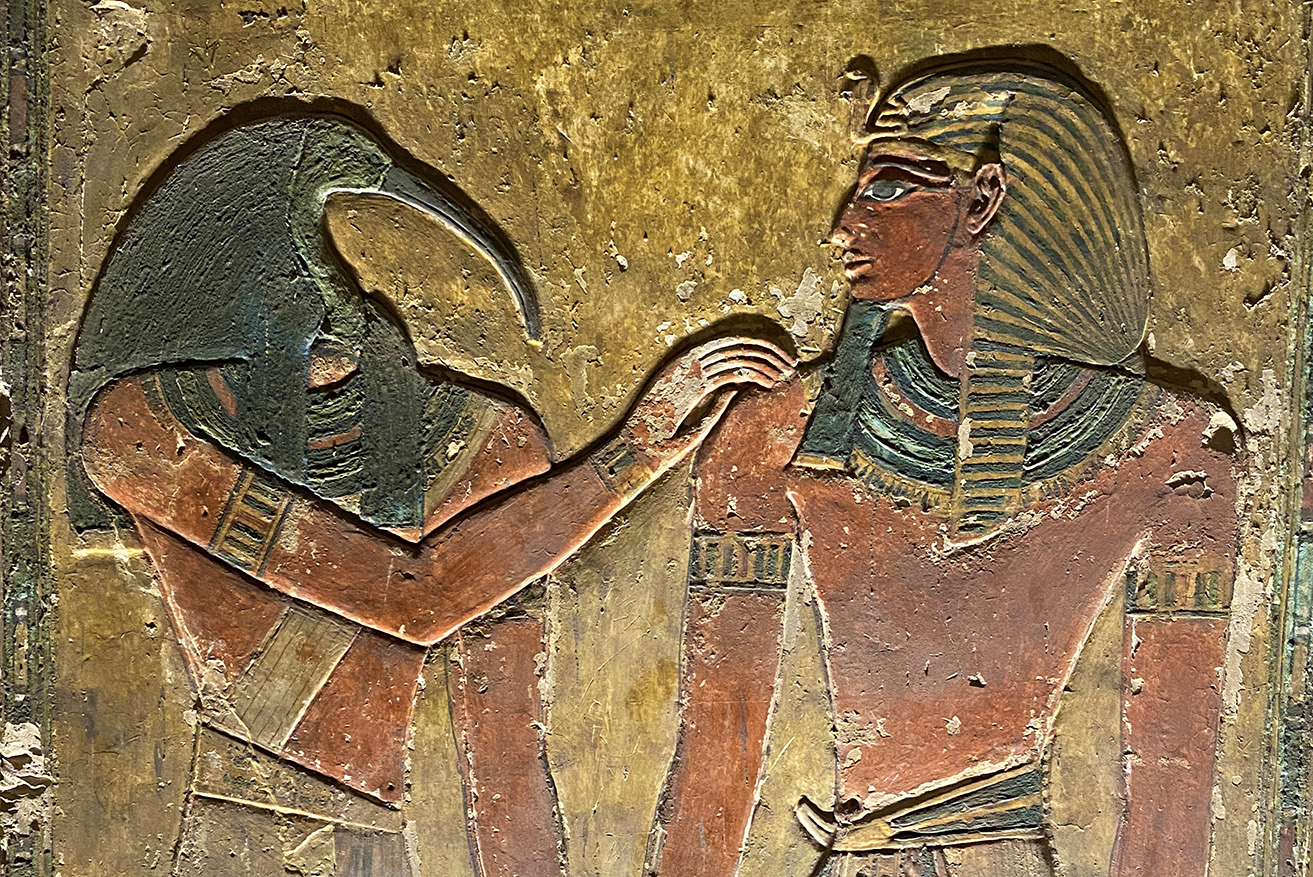Difference between revisions of "Template:POTD protected"
Occultwiki (talk | contribs) |
Occultwiki (talk | contribs) |
||
| Line 1: | Line 1: | ||
{| role="presentation" style="margin:0 3px 3px; width:100%; text-align:left; background-color:transparent; border-collapse: collapse; " | {| role="presentation" style="margin:0 3px 3px; width:100%; text-align:left; background-color:transparent; border-collapse: collapse; " | ||
|style="padding:0 0.9em 0 0;" | [[File: | |style="padding:0 0.9em 0 0;" | [[File:Thoth and Seti.jpg|300px|thumb|]] | ||
|style="padding:0 6px 0 0"| | |style="padding:0 6px 0 0"| | ||
'''[[ | '''[[Thoth]]''' is an ancient Egyptian deity. In art, he was often depicted as a man with the head of an ibis or a baboon, animals sacred to him. His feminine counterpart was Seshat, and his wife was Ma'at. He was the god of the [[moon]], wisdom, writing, hieroglyphs, science, magic, art, and judgment. His Greek equivalent is [[Hermes Trismegistus|Hermes]]. | ||
Thoth's chief temple was located in the city of Hermopolis. Later known as el-Ashmunein in Egyptian Arabic, the Temple of Thoth was mostly destroyed before the beginning of the [[Christianity|Christian]] era, but its very large pronaos was still standing in 1826. | |||
<p><small> | Thoth played many vital and prominent roles in [[Egyptian religion]], such as maintaining the universe, and being one of the two deities (the other being Ma'at) who stood on either side of [[Ra]]'s solar barque. In the later history of ancient Egypt, Thoth became heavily associated with the arbitration of godly disputes, the art of [[ritual magic]], the system of writing, and the judgment of the dead. | ||
<p><small>Photographer: [[Travis McHenry]]</small></p> | |||
[[:Category:Images|'''(More Images)''']] | [[:Category:Images|'''(More Images)''']] | ||
<div class="potd-recent" style="text-align:right;"> | <div class="potd-recent" style="text-align:right;"> | ||
Revision as of 18:42, 22 January 2023
|
Thoth is an ancient Egyptian deity. In art, he was often depicted as a man with the head of an ibis or a baboon, animals sacred to him. His feminine counterpart was Seshat, and his wife was Ma'at. He was the god of the moon, wisdom, writing, hieroglyphs, science, magic, art, and judgment. His Greek equivalent is Hermes. Thoth's chief temple was located in the city of Hermopolis. Later known as el-Ashmunein in Egyptian Arabic, the Temple of Thoth was mostly destroyed before the beginning of the Christian era, but its very large pronaos was still standing in 1826. Thoth played many vital and prominent roles in Egyptian religion, such as maintaining the universe, and being one of the two deities (the other being Ma'at) who stood on either side of Ra's solar barque. In the later history of ancient Egypt, Thoth became heavily associated with the arbitration of godly disputes, the art of ritual magic, the system of writing, and the judgment of the dead. Photographer: Travis McHenry |
